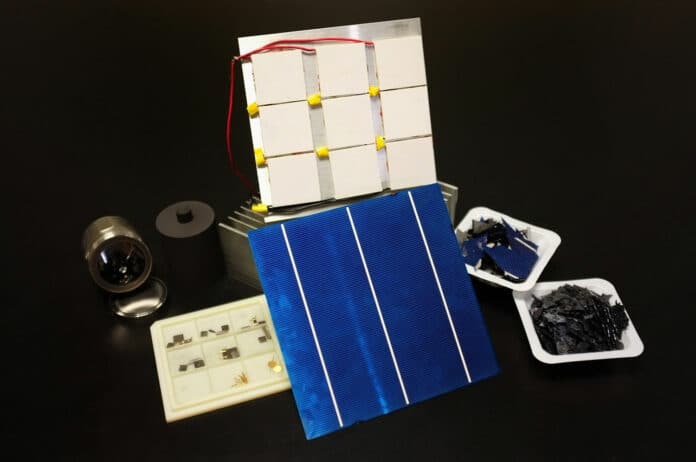With the increased use of solar renewable energy over the last few decades and a limited lifespan of 30 years for solar panels, the global waste generated from silicon in end-of-life solar panels is increasing. While precious metals such as silver and copper are usually recycled, silicon, which makes up the bulk of solar cells, goes to landfills. It is challenging to upcycle silicon as recycled silicon has impurities and defects, which cannot be used to create functional solar cells, making it difficult to recycle used silicon into solar cells or other silicon-based technologies.
Now, a team of scientists from the Agency for Science, Technology, and Research (A*STAR) and Nanyang Technological University, Singapore (NTU Singapore) turned this limitation into an opportunity. They have developed a technology that can turn old, expired solar panels into a new high-performance energy-harvesting thermoelectric material, which harvests heat and convert it into electricity.
Compared to solar cells, this technology capitalizes on the contrasting properties of thermoelectrics, where the incorporation of impurities and defects serves to enhance rather than diminish their performance.
To achieve this, researchers first pulverized solar cells into a fine powder using ball milling technology, which allowed them to impart thermoelectric characteristics such as power conversion and cooling efficiency to waste silicon. After that, phosphorus and germanium powder were added to alter their original properties before the powder combination was processed under high heat and temperature using spark plasma sintering.
The team developed a sample offering the most optimized thermoelectric performance, with a record-high thermoelectric figure of merit (zT) of 0.45 at 873 K – the highest amongst elemental silicon thermoelectrics.
“Leveraging our resource recovery techniques and in collaboration with A*STAR, we have proven that it can yield valuable materials that are of high quality and useful in the manufacturing of renewable energy components, which in this case, is the development of a high-performance thermoelectric material that can harvest heat and turn it into electricity,” co-corresponding author of the research NTU Assoc Prof Mathews, who is also the Cluster Director of Renewables & Low-Carbon Generation (Solar) at the Energy Research Institute, said.
The team will also look to pilot the technology for large-scale upcycling of waste silicon, which can be used for high-temperature energy harvesting applications such as converting heat generated from industrial waste processes into electricity.
